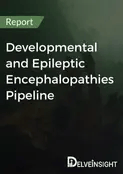Developmental and epileptic encephalopathies (DEEs) constitute some of the most devastating pediatric neurological conditions, distinguished by uncontrolled seizure activity, severe developmental deterioration, and complex cognitive dysfunction. The therapeutic innovation pathway encompasses a comprehensive development framework stretching from foundational scientific research through clinical implementation, demonstrating both the sophisticated biological mechanisms underlying these disorders and the critical medical need for groundbreaking treatment solutions.
Scientific Foundation: Genetic Discovery and Target Selection
The therapeutic advancement process originates with core research dedicated to understanding the molecular mechanisms that disrupt normal brain development. Revolutionary genomic technologies, including comprehensive sequencing methodologies and advanced genetic analysis, have accelerated identification of disease-causing genetic factors—encompassing single-gene mutations and complex polygenic contributions—that underlie rare epileptic syndromes. These genetic insights enable identification of therapeutic targets, including malfunctioning proteins, defective ion channels, disrupted neurotransmitter systems, or compromised cellular pathways that contribute to seizure generation and developmental impairment.
Modern research prioritizes understanding how genetic variations compromise neural circuit formation, alter neuronal excitability patterns, and impair synaptic communication mechanisms, establishing the scientific foundation for therapeutic development initiatives.
Laboratory Validation: Advanced Experimental Systems
Scientific confirmation employs sophisticated experimental platforms to establish therapeutic potential. Cutting-edge laboratory systems, including patient-specific neuronal cultures, three-dimensional brain organoids, and bioengineered neural networks, facilitate systematic screening of therapeutic compounds for their capacity to normalize disease-related cellular abnormalities. Complementary investigations using genetically modified animal models that faithfully replicate human disease characteristics provide comprehensive testing environments for evaluating therapeutic effects on seizure propensity, developmental milestones, and neurological function.
This validation phase requires extensive interdisciplinary collaboration, combining expertise from molecular genetics, cellular neuroscience, pharmacological sciences, and translational research to optimize therapeutic candidates and enhance mechanistic understanding.
Therapeutic Innovation Across Platforms
Following target validation, research efforts focus on developing specific treatment interventions across multiple therapeutic categories. Small molecule drugs undergo rigorous optimization for neuronal activity modulation, blood-brain barrier penetration, and safety enhancement. Biological therapeutics, including monoclonal antibodies and gene-targeted interventions, are engineered to directly engage target proteins or correct underlying genetic defects. Gene-based therapeutic approaches, utilizing viral vector delivery systems, antisense oligonucleotides, and RNA-targeting strategies, demonstrate exceptional promise for addressing fundamental disease processes rather than symptomatic management.
Comprehensive Preclinical Assessment
Extensive preclinical evaluation encompasses detailed pharmacological, toxicological, and safety investigations. Scientists systematically examine therapeutic candidate behavior in biological systems, assessing brain tissue penetration, metabolic processing, and potential developmental impacts. These studies establish optimal dosing protocols while identifying safety considerations, ensuring therapeutic suitability for vulnerable pediatric populations whose developing nervous systems may exhibit heightened drug sensitivity.
Initial Human Studies
Promising therapeutic candidates advance to carefully designed first-in-human investigations. These foundational studies, typically beginning with adult participants before progressing to selected pediatric subjects, emphasize safety assessment, treatment tolerance, and preliminary biological activity confirmation. Early Developmental and Epileptic Encephalopathies Clinical Trials incorporate advanced biomarker monitoring to verify target engagement and therapeutic response.
Adaptive Research Methodologies
The inherent challenges of rare disease research necessitate innovative clinical trial approaches. Researchers implement flexible study designs, including adaptive protocols, patient-enriched enrollment strategies, and biomarker-guided selection criteria. Integration of comprehensive patient registries, natural history databases, and validated outcome measures enhances research efficiency while improving detection of clinically meaningful benefits in small patient populations.
Large-Scale Efficacy Studies
Following encouraging preliminary results, therapeutic candidates progress to comprehensive effectiveness evaluations. These pivotal trials, conducted across multiple international research centers, evaluate therapeutic impacts on primary endpoints including seizure frequency reduction, developmental achievement, and quality of life improvement. Clinical assessments encompass both epilepsy-specific measures and broad neurodevelopmental evaluations, recognizing the interconnected relationship between seizure control and cognitive development.
Precision Medicine Strategies
Contemporary therapeutic development within the modern Developmental and Epileptic Encephalopathies Pipeline increasingly emphasizes personalized treatment approaches designed for specific genetic variants. Individualized interventions, including custom-designed antisense therapies or patient-specific gene correction strategies, represent transformative advances toward truly personalized medicine through specialized research frameworks adapted to unique patient genetic profiles.
Long-Term Monitoring and Evidence
Sustained assessment through patient registries, digital health platforms, and remote monitoring technologies enables thorough analysis of long-term treatment outcomes, safety profiles, and developmental trajectories. This real-world clinical evidence continuously informs research directions, treatment optimization, and future trial design enhancement while ensuring ongoing patient safety and therapeutic effectiveness evaluation.
Collaborative Development Networks
Strategic alliances between academic institutions, biotechnology firms, patient advocacy groups, and regulatory agencies drive continued innovation. These collaborative partnerships accelerate translational research, support investigator-initiated studies, and maintain patient-centered development approaches while leveraging diverse funding sources including government grants, philanthropic support, and commercial investment.
The active participation of specialized Developmental and Epileptic Encephalopathies Companies combines pharmaceutical industry knowledge, biotechnology advancement, and disease-specific expertise to tackle these complex neurological challenges through targeted development programs.
Conclusion: Hope Through Scientific Excellence
The therapeutic development pathway for developmental and epileptic encephalopathies represents a sophisticated, multidisciplinary endeavor integrating genetic discovery, experimental validation, diverse treatment modalities, innovative clinical methodologies, and patient-focused collaboration. This comprehensive development framework provides genuine hope for reducing seizure burden, preserving developmental potential, and enhancing quality of life for patients and families confronting these challenging neurological conditions.
Latest Reports Offered by Delveinsight:
Novel Drug Delivery Devices Market | Osteoarthritis Market | Physiotherapy Equipment Market | Retinopathy Of Prematurity Market | Urolithiasis Market | Vaginal Rejuvenation Systems Market | Valley Fever Market | Acute On Liver Failure Market | Adrenal Cortex Neoplasms Market | Advanced Cancer Pain Management Market | Aids Related Kaposi’s Sarcoma Market | Angioedema Market | Autosomal Recessive Congenital Ichthyosis Market Size | B-cell Non-hodgkin Lymphoma Market | Balloon Valvuloplasty Device Market | Blood Glucose Monitoring Systems Market | Bone And Joint Infection Market | Cannabis Use Disorder Market | Capnography Devices Market | Carcinoid Syndrome Market
Latest Reports:
https://www.delveinsight.com/report-store/shigella-infections-epidemiology-forecast
https://www.delveinsight.com/report-store/acute-cannabinoid-intoxication-epidemiology-forecast
https://www.delveinsight.com/report-store/liver-angiosarcoma-epidemiology-forecast
https://www.delveinsight.com/report-store/renal-anemia-epidemiology-forecast
https://www.delveinsight.com/report-store/anus-neoplasms-epidemiology-forecast
https://www.delveinsight.com/report-store/hematuria-epidemiology-forecast
https://www.delveinsight.com/report-store/chemotherapy-induced-diarrhea-epidemiology-forecast
https://www.delveinsight.com/report-store/otitis-media-epidemiology-forecast
About DelveInsight
DelveInsight is a trusted provider of life sciences and pharmaceutical market research and consulting, offering actionable insights that empower organizations to make informed decisions. With a commitment to delivering strategic intelligence, DelveInsight serves as a key partner to global pharmaceutical, biotechnology, and healthcare companies looking to excel in an evolving market landscape.
Contact Us
Kanishk
Email: kkumar@delveinsight.com

